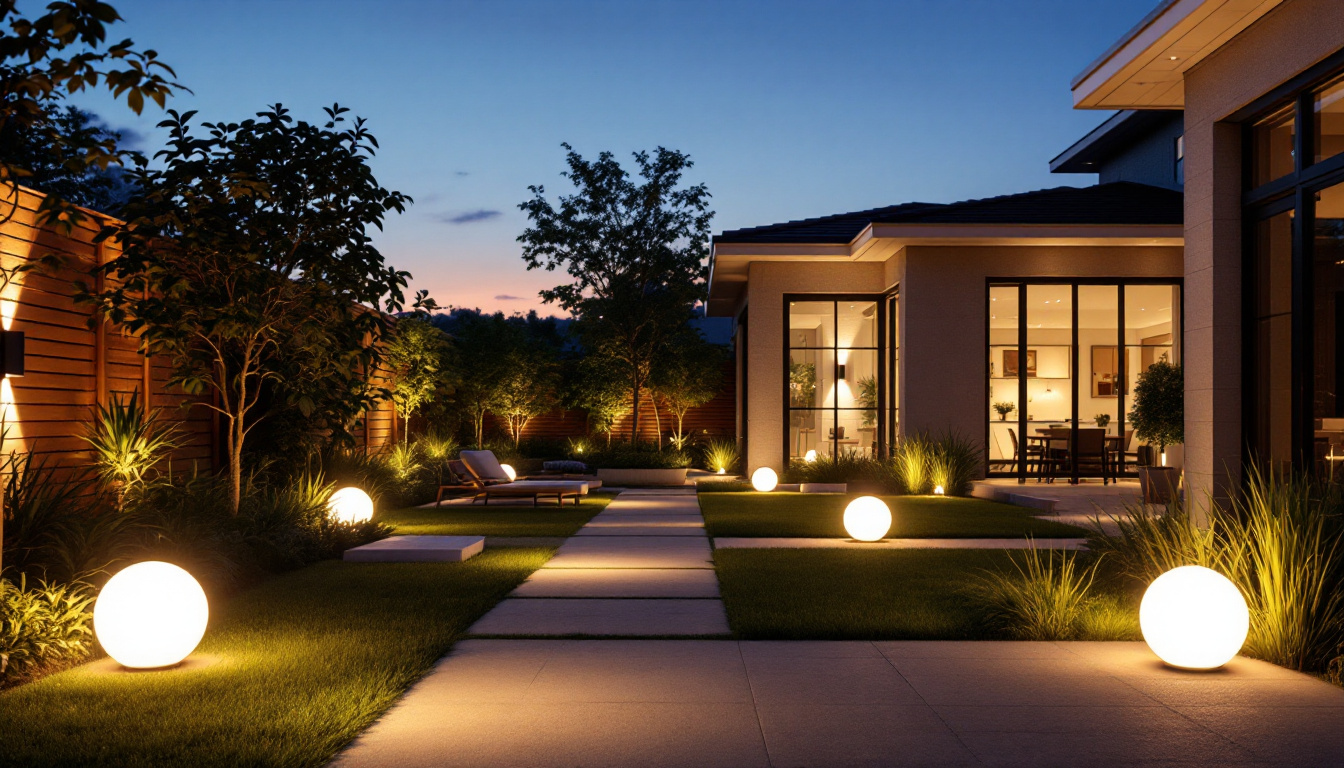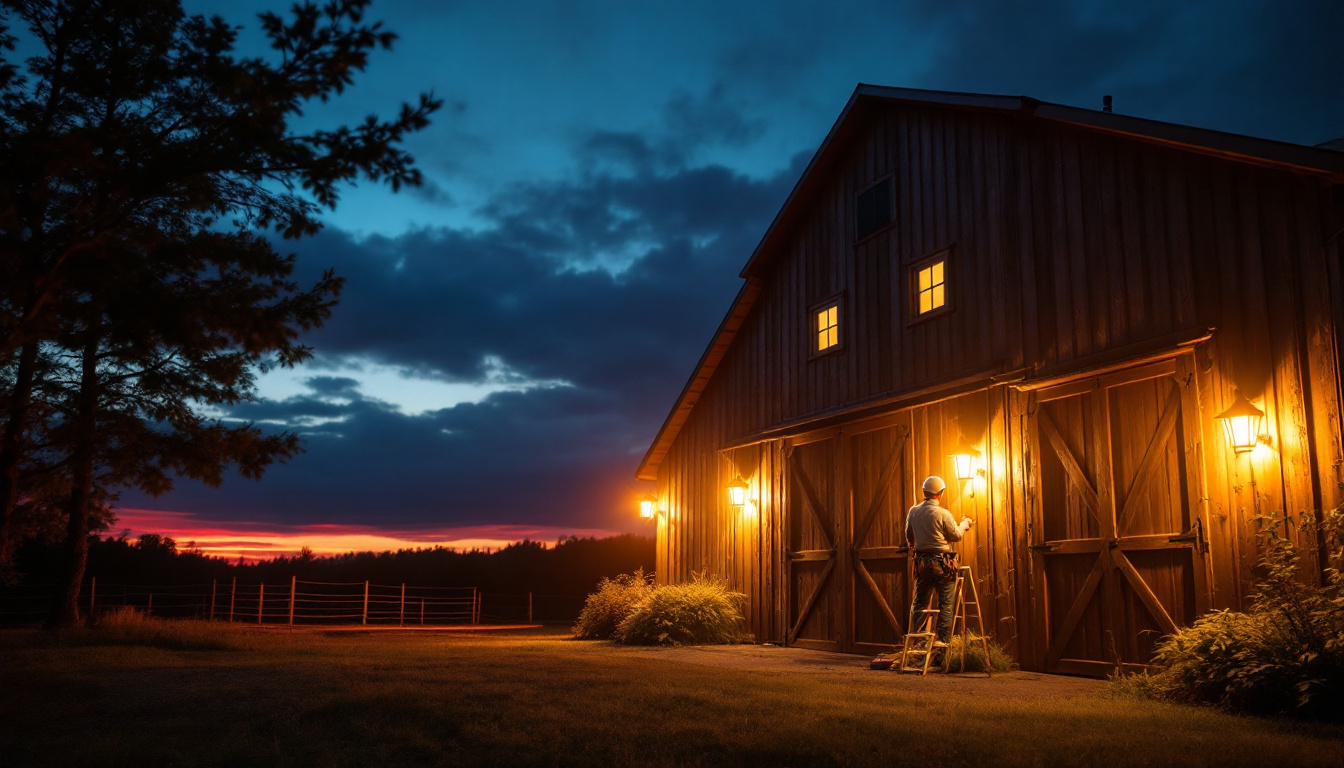
In the world of outdoor lighting, the right approach can transform a simple home into a stunning visual masterpiece. For lighting contractors, mastering the art of outdoor home lights is not just about aesthetics; it’s also about functionality, efficiency, and client satisfaction. This article explores innovative hacks that can enhance your outdoor lighting projects, ensuring they meet the needs of modern homeowners while showcasing your skills as a contractor.
Before diving into advanced hacks, it’s essential to grasp the fundamentals of outdoor lighting. Understanding the various types of outdoor lights and their applications will set the stage for more sophisticated techniques. Proper outdoor lighting not only enhances the beauty of your landscape but also improves safety and security, making it an integral part of any outdoor design.
Outdoor lighting can be categorized into several types, including ambient, task, and accent lighting. Ambient lighting provides general illumination, making it easier to navigate outdoor spaces. Task lighting, on the other hand, is designed for specific activities, such as cooking on a grill or reading on a patio. Accent lighting highlights architectural features or landscaping, adding depth and interest to the outdoor environment.
Each type serves a unique purpose, and knowing how to combine them effectively can create a well-balanced lighting design. For instance, using ambient lighting to illuminate a pathway while incorporating accent lights to highlight trees or sculptures can create a visually appealing and functional outdoor space. Furthermore, incorporating smart lighting solutions can enhance the experience, allowing homeowners to adjust brightness and color according to their mood or the occasion, thus transforming the outdoor area from a serene retreat to a lively gathering spot with just a few taps on a smartphone.
Selecting the appropriate fixtures is crucial for outdoor lighting projects. Factors such as durability, weather resistance, and energy efficiency should guide your choices. LED fixtures are increasingly popular due to their longevity and low energy consumption. Additionally, consider the aesthetic appeal of the fixtures, ensuring they complement the home’s architecture and landscape.
Another important aspect is the color temperature of the lights. Warmer tones create a cozy atmosphere, while cooler tones can provide a more modern look. Understanding your client’s preferences and the intended use of the space will help in making the right selections. Moreover, the placement of fixtures plays a vital role in achieving the desired effect; for example, strategically positioning lights to cast shadows can add drama to a garden, while ensuring that lights are not too harsh can maintain a welcoming ambiance. Exploring various styles, from rustic lanterns to sleek modern sconces, can also enhance the overall theme of the outdoor area, making it a true extension of the home.
With the rise of smart home technology, incorporating smart lighting solutions into outdoor projects has become increasingly important. These systems not only enhance convenience but also offer energy savings and improved security. As homeowners seek to create more functional and aesthetically pleasing outdoor spaces, smart lighting serves as a pivotal element in achieving these goals, transforming ordinary yards into vibrant, dynamic environments.
Smart controls allow homeowners to manage their outdoor lighting remotely. By integrating systems that can be controlled via smartphone apps or voice commands, contractors can offer clients a level of convenience that traditional lighting systems cannot match. This integration can include features such as scheduling, dimming, and color changes, allowing homeowners to customize their outdoor lighting according to their needs. For example, a homeowner might choose to set a warm, inviting glow for evening gatherings while opting for cooler, brighter lights for security purposes during the night.
Moreover, smart lighting systems can be programmed to respond to environmental changes. For example, lights can be set to turn on automatically at sunset or adjust based on the amount of natural light available. This not only enhances functionality but also contributes to energy efficiency, a key selling point for many homeowners. Additionally, some systems can even integrate with weather forecasts, adjusting the lighting based on predicted rain or storms, ensuring that outdoor spaces remain both safe and welcoming regardless of the conditions.
Incorporating motion sensors into outdoor lighting designs can significantly enhance security and convenience. These sensors can detect movement and automatically activate lights, providing illumination when needed and saving energy when not. For instance, a pathway light equipped with a motion sensor will illuminate only when someone approaches, reducing unnecessary energy consumption. This feature not only saves on electricity bills but also prolongs the lifespan of the lighting fixtures, making it a wise investment for homeowners.
Additionally, motion-activated lights can deter potential intruders, making homes feel safer. Educating clients about the benefits of motion sensors can be a great selling point, especially for those concerned about security. Beyond safety, these sensors can also enhance the overall user experience; for instance, families can enjoy the convenience of lights coming on automatically as they return home with hands full of groceries, creating a welcoming atmosphere. Furthermore, integration with home security systems can provide alerts to homeowners when unusual movement is detected, adding an extra layer of peace of mind.
Beyond functionality, creativity plays a vital role in outdoor lighting design. Implementing unique design hacks can set a contractor apart from the competition and leave a lasting impression on clients.
One effective design hack is layering light to create depth and dimension in outdoor spaces. This technique involves combining different types of lighting—ambient, task, and accent—to achieve a balanced and visually appealing environment. For example, using overhead lighting for general illumination, paired with wall sconces for accent lighting, can create a warm and inviting atmosphere.
Layering light also allows for flexibility in how spaces are used. Homeowners can adjust the lighting based on activities, whether hosting a gathering or enjoying a quiet evening outdoors. This adaptability can significantly enhance the overall experience of outdoor living spaces.
Incorporating natural elements into lighting designs can create a harmonious connection between the home and its surroundings. For instance, using fixtures made from materials like wood or stone can blend seamlessly with landscaping, enhancing the overall aesthetic. Additionally, strategically placing lights near plants or water features can create stunning visual effects, especially at night.
Contractors can also consider using solar-powered lights as a sustainable option that complements natural elements. These lights harness solar energy during the day and provide illumination at night, reducing energy costs and environmental impact.
Successful outdoor lighting projects rely heavily on proper installation. Here are some practical tips to ensure a seamless process and high-quality results.
Before installation, it’s crucial to plan the layout carefully. This involves assessing the outdoor space, identifying key areas that require lighting, and determining the best fixture placements. Creating a lighting plan can help visualize how different elements will come together, ensuring a cohesive design.
During the planning phase, consider the height and angle of the fixtures. For instance, uplighting trees can create dramatic shadows, while downlighting can provide a soft glow on pathways. Taking the time to plan will save time and effort during installation and lead to a more polished final result.
Proper wiring is essential for outdoor lighting systems to function safely and effectively. It’s important to use weatherproof materials and follow local electrical codes to prevent issues down the line. Additionally, burying wires at an appropriate depth can protect them from damage and ensure longevity.
Contractors should also consider using low-voltage systems for outdoor lighting. These systems are safer, easier to install, and more energy-efficient than traditional high-voltage systems. Educating clients about the benefits of low-voltage lighting can also enhance their overall satisfaction with the project.
Encourage clients to perform routine maintenance checks on their outdoor lighting systems. This includes cleaning the fixtures to remove dirt and debris, checking for any damaged wiring, and ensuring that sensors and timers are functioning correctly. Regular maintenance can prevent small issues from becoming major problems and keep the lighting looking its best.
Additionally, contractors can provide clients with a maintenance schedule that outlines when to perform specific tasks, such as replacing bulbs or checking connections. This proactive approach can enhance client satisfaction and build trust in the contractor’s expertise.
For clients with smart lighting systems, education is key to maximizing the benefits of these technologies. Providing a tutorial on how to use the smart controls, set schedules, and customize settings can empower clients to take full advantage of their outdoor lighting systems.
Consider creating a user-friendly guide or video tutorial that clients can refer to after the installation. This not only enhances their experience but also positions the contractor as a knowledgeable resource, fostering long-term relationships and potential referrals.
Outdoor lighting is a multifaceted discipline that combines artistry, technology, and practicality. By implementing these hacks and strategies, lighting contractors can elevate their projects, providing clients with beautiful, functional, and smart outdoor spaces. From understanding the basics to embracing innovative technologies and creative designs, the possibilities are endless. With the right approach, contractors can not only meet but exceed client expectations, ensuring their outdoor lighting projects shine bright for years to come.
Ready to take your outdoor lighting projects to the next level? At LumenWholesale, we provide lighting contractors like you with the finest spec-grade lighting products at prices that can’t be beaten. Say goodbye to local distributor markups and hello to a vast selection of industry-standard, high-performance lighting solutions. With free shipping on bulk orders, you can stock up on premium lighting without worrying about hidden fees. Elevate your outdoor lighting designs with the quality, affordability, and convenience that only LumenWholesale can offer. Discover Wholesale Lighting at the Best Value today and make every project shine brighter.

Discover the pitfalls lighting contractors often encounter when dealing with wholesale lighting companies.

Discover how the Cellring Fan is revolutionizing the lighting industry by providing contractors with a competitive edge.

Discover how Hi Lite in Chino, CA, is revolutionizing lighting projects with innovative solutions that boost efficiency and performance.

Discover the key benefits and installation tips for solar-powered barn lights, a must-have for modern lighting contractors.